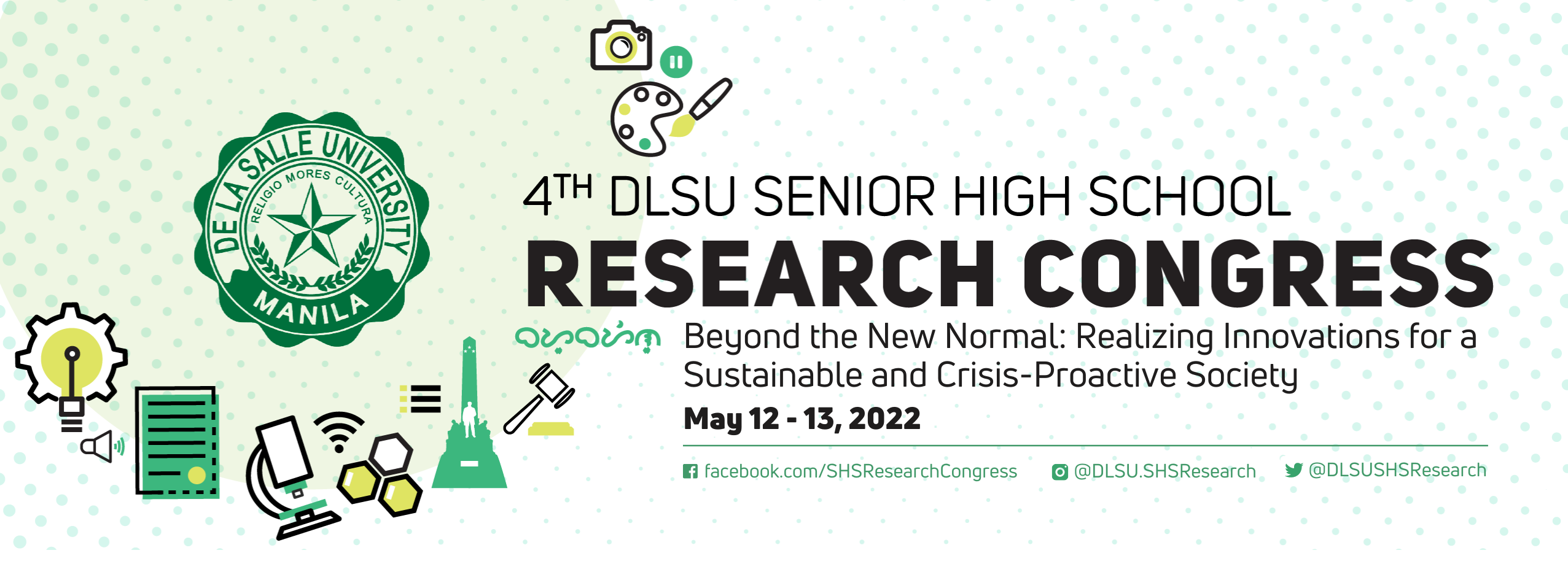SHS Students’ Engagement in Online Synchronous Collaborative Learning Activities: Correlations with Self-efficacy, Peer’s Social Support, Well-being and Academic Performance
Document Types
Paper Presentation
Research Advisor (Last Name, First Name, Middle Initial)
Myla M. Arcinas
Start Date
12-5-2022 3:30 PM
End Date
12-5-2022 5:30 PM
Abstract/Executive Summary
The pandemic of COVID-19 prompted a number of paradigm shifts throughout society, including education. This study aimed to examine the relationships between students' engagement in online synchronous collaborative learning activities (OSCLA) and their self-efficacy (LSE), peer social support (LPSS), state of well-being (SWB), and academic performance in Grade 12 senior high school (SHS) (LAP). A total of 176 Filipino Grade 12 SHS students, aged 18 years and older, from a private educational institution were purposively selected for this study. Data was generated using an online survey. Results show that collaborative learning activities are frequently conducted (median = 4) in their synchronous online classes. It also revealed that their LSE is high (median = 4), their LPSS is high (median = 4), their LE is moderate (median = 3), their SWB is high (median = 4), and their LAP is high (median = 94.85). The results showed a statistically significant correlation of their LSE (r = 0.69, p 0.001) and LPSS with their OSCLA LE (r = 0.438, p 0.001). A statistically significant positive moderate correlation between LE and SWB (r = 0.536, p 0.001) was also found, however, no correlation was found between their OSCLA LE and LAP (r = 0.065, p = 0.393). Thus, the use of a well-designed OSCLA is strongly recommended because it positively impacts students' SWB but should be regularly reviewed for its effectiveness to improve the LAP.
Keywords
online synchronous collaborative learning activities; self-efficacy; social support; well-being; academic performance
Research Theme (for Paper Presentation and Poster Presentation submissions only)
21st Century Learning and Innovations (CLI)
SHS Students’ Engagement in Online Synchronous Collaborative Learning Activities: Correlations with Self-efficacy, Peer’s Social Support, Well-being and Academic Performance
The pandemic of COVID-19 prompted a number of paradigm shifts throughout society, including education. This study aimed to examine the relationships between students' engagement in online synchronous collaborative learning activities (OSCLA) and their self-efficacy (LSE), peer social support (LPSS), state of well-being (SWB), and academic performance in Grade 12 senior high school (SHS) (LAP). A total of 176 Filipino Grade 12 SHS students, aged 18 years and older, from a private educational institution were purposively selected for this study. Data was generated using an online survey. Results show that collaborative learning activities are frequently conducted (median = 4) in their synchronous online classes. It also revealed that their LSE is high (median = 4), their LPSS is high (median = 4), their LE is moderate (median = 3), their SWB is high (median = 4), and their LAP is high (median = 94.85). The results showed a statistically significant correlation of their LSE (r = 0.69, p 0.001) and LPSS with their OSCLA LE (r = 0.438, p 0.001). A statistically significant positive moderate correlation between LE and SWB (r = 0.536, p 0.001) was also found, however, no correlation was found between their OSCLA LE and LAP (r = 0.065, p = 0.393). Thus, the use of a well-designed OSCLA is strongly recommended because it positively impacts students' SWB but should be regularly reviewed for its effectiveness to improve the LAP.


